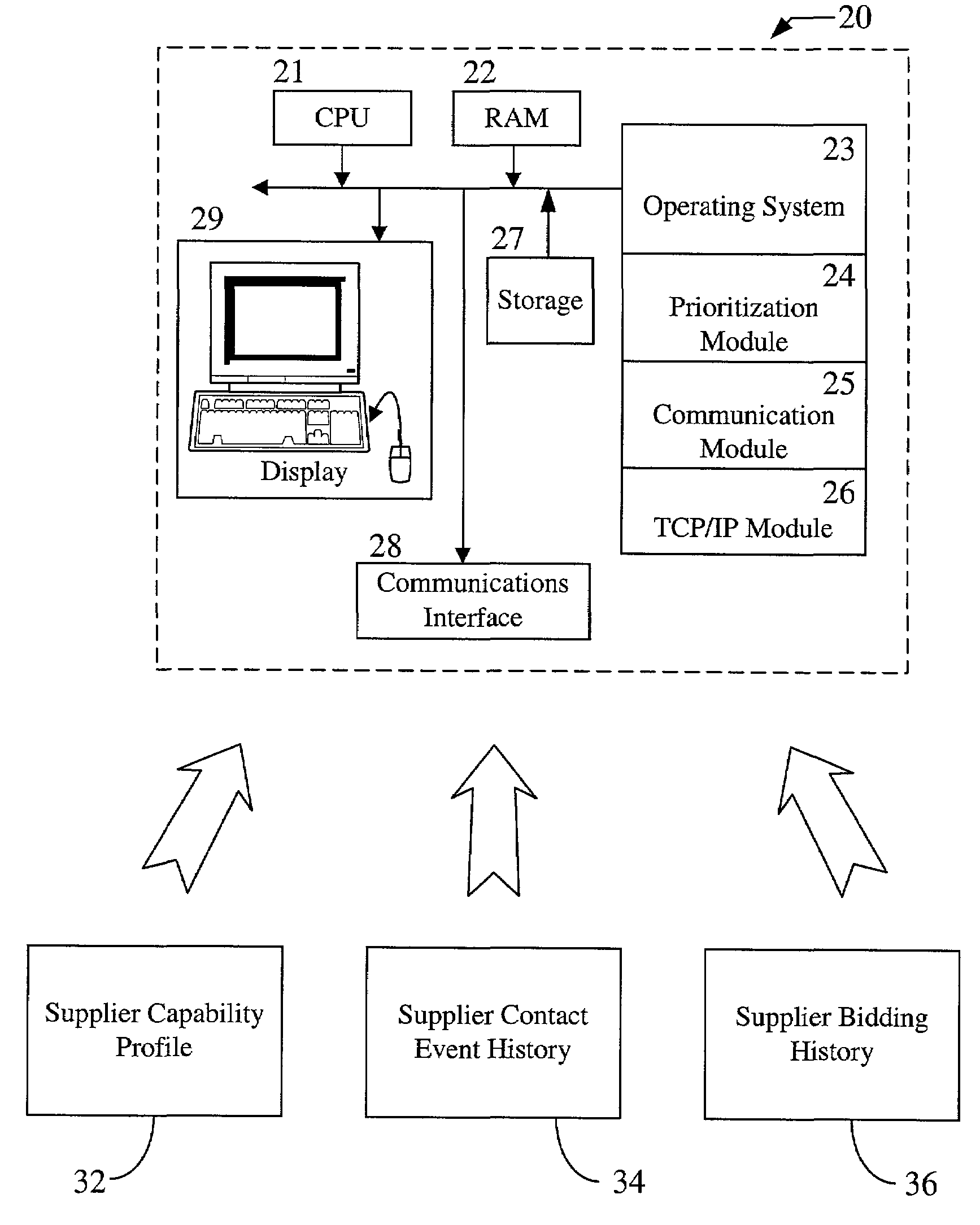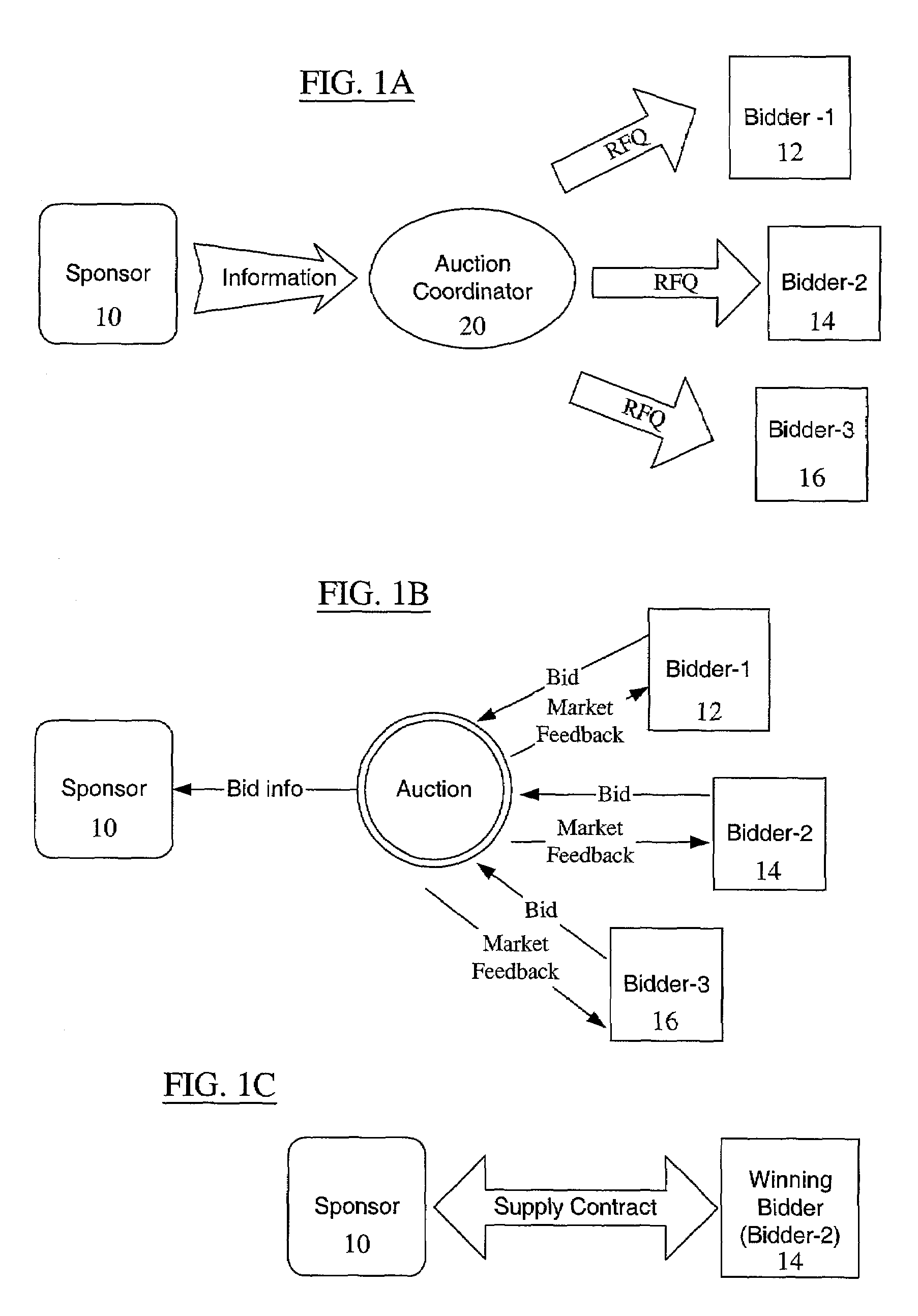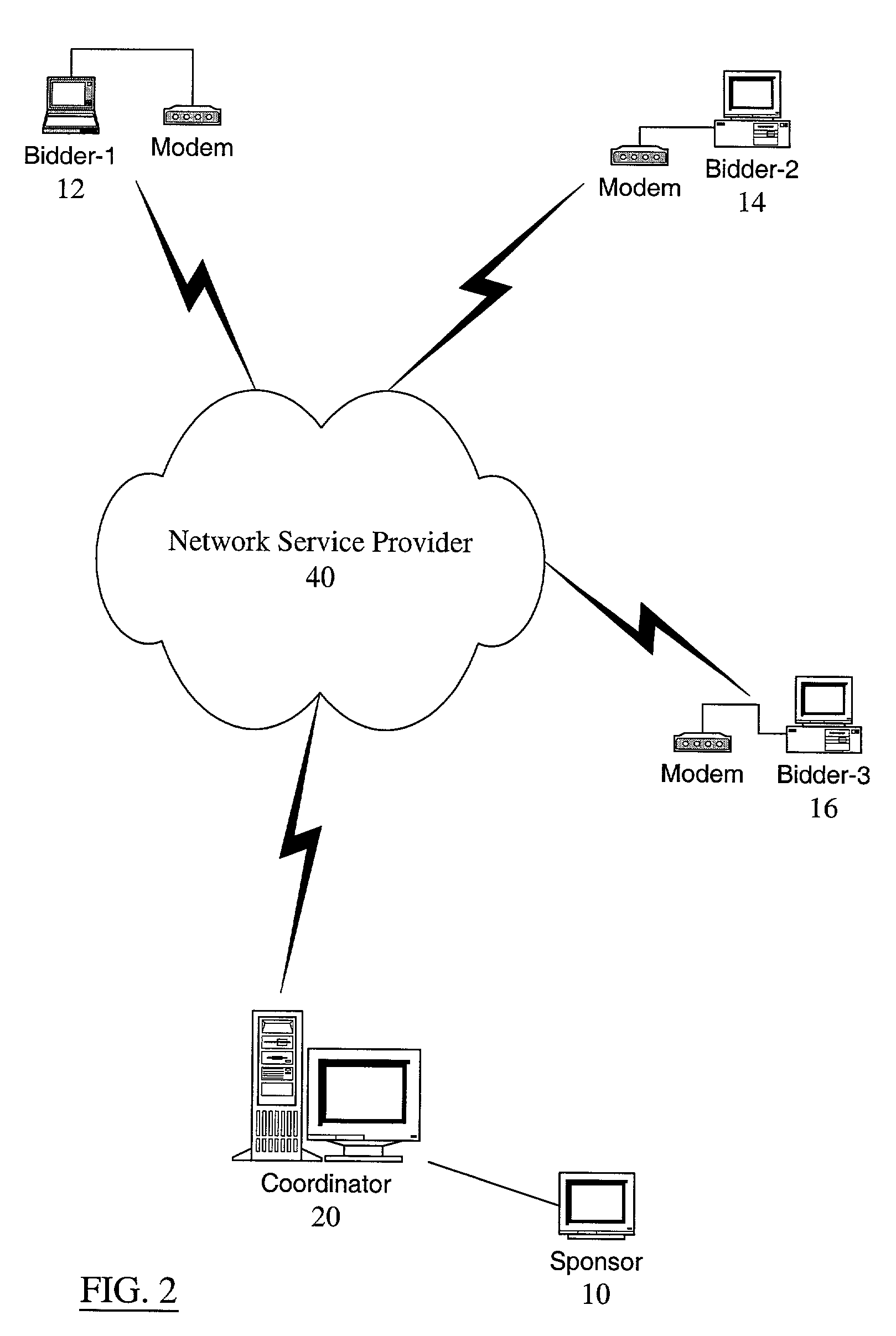Method and system for supplier prioritization
a supplier and prioritization technology, applied in the field of online electronic auctions, can solve the problems of high transaction cost, disadvantageous “locking” of customers, and difficulty in identifying potential bidders, so as to reduce the number of suppliers, reduce the transaction cost involved, and minimize the amount of unnecessary calls
- Summary
- Abstract
- Description
- Claims
- Application Information
AI Technical Summary
Benefits of technology
Problems solved by technology
Method used
Image
Examples
Embodiment Construction
[0029]Reference will now be made in detail to the preferred embodiments of the present invention, examples of which are illustrated in the accompanying drawings. It is to be understood that the figures and descriptions of the present invention included herein illustrate and describe elements that are of particular relevance to the present invention, while eliminating, for purposes of clarity, other elements found in typical auction systems and computer networks.
[0030]In a supplier-bidding auction or reverse auction, bids, which are often in the form of a price quote, typically start high and move downward over time as bidders interact to establish a closing price. It is noted that the terms “supplier” and “bidder” are used interchangeably herein to refer to a person or legal entity participating as a bidder in, for example, an on-line auction. Similarly, the terms “sponsor”, “buyer”, “purchaser” or “auction requester” are also used interchangeably herein to refer to a person or lega...
PUM
 Login to View More
Login to View More Abstract
Description
Claims
Application Information
 Login to View More
Login to View More - R&D
- Intellectual Property
- Life Sciences
- Materials
- Tech Scout
- Unparalleled Data Quality
- Higher Quality Content
- 60% Fewer Hallucinations
Browse by: Latest US Patents, China's latest patents, Technical Efficacy Thesaurus, Application Domain, Technology Topic, Popular Technical Reports.
© 2025 PatSnap. All rights reserved.Legal|Privacy policy|Modern Slavery Act Transparency Statement|Sitemap|About US| Contact US: help@patsnap.com



